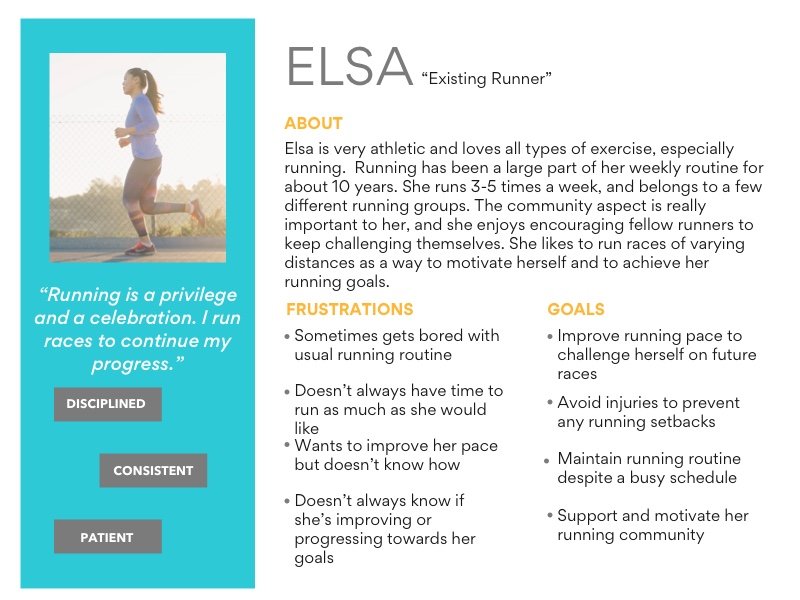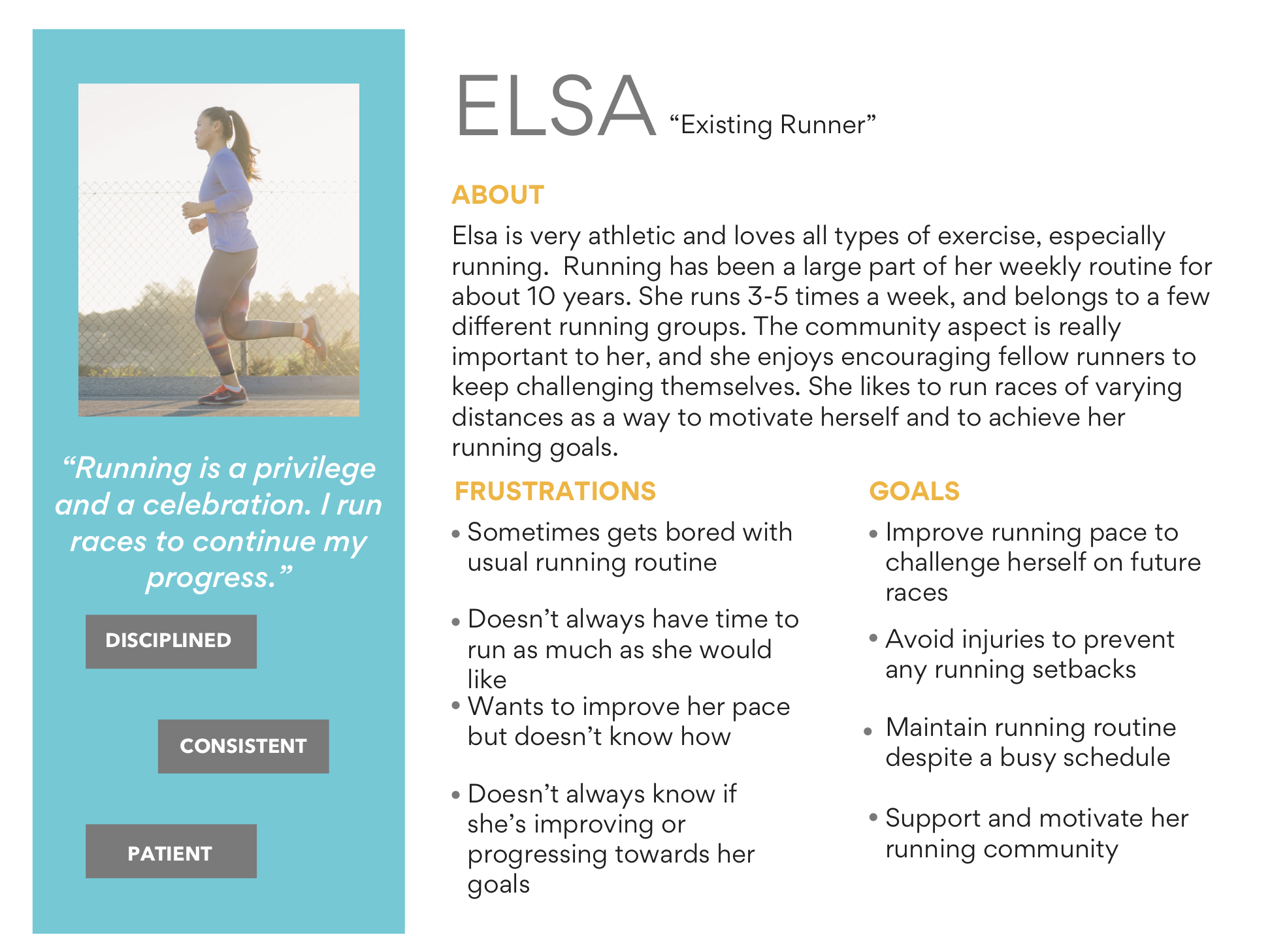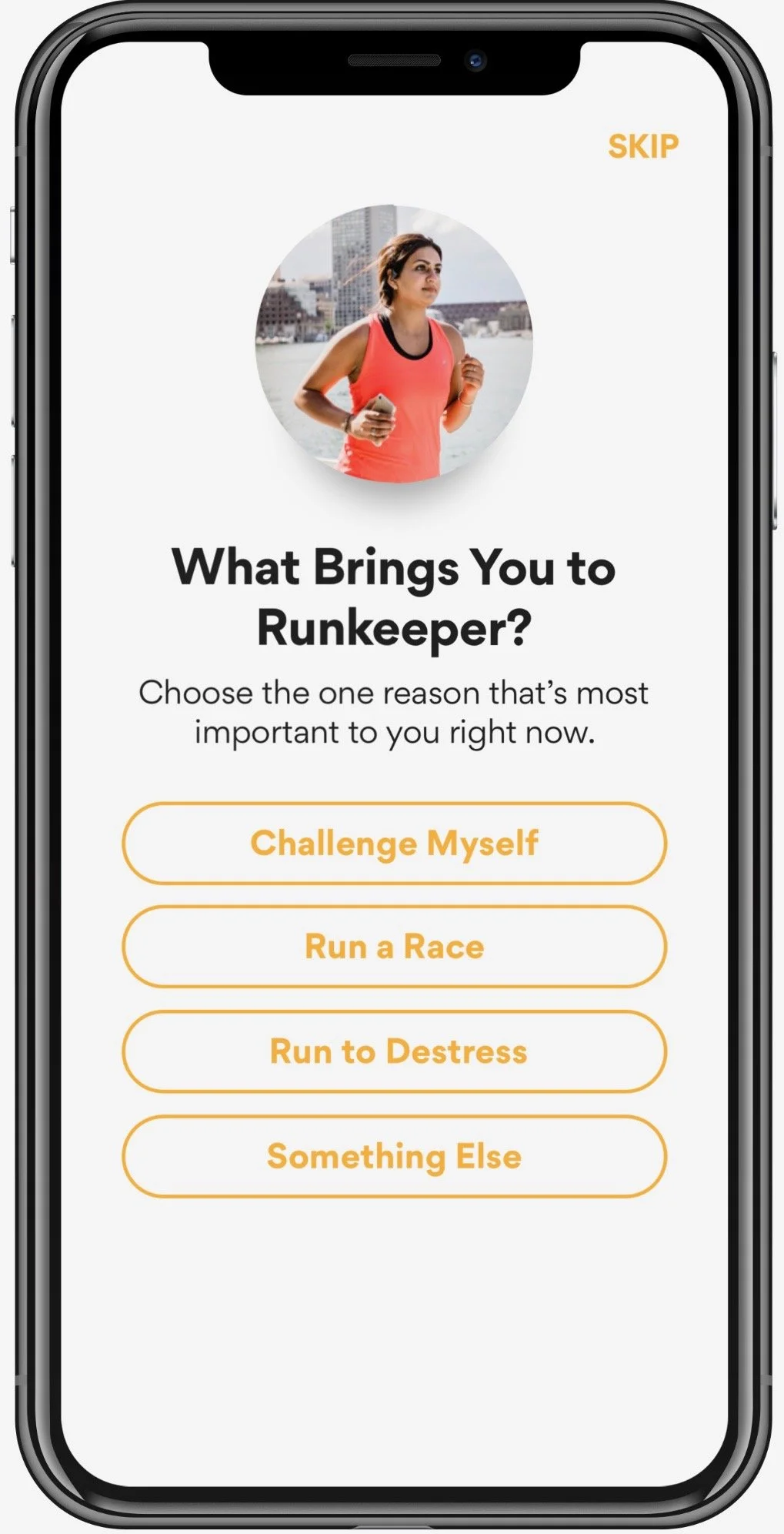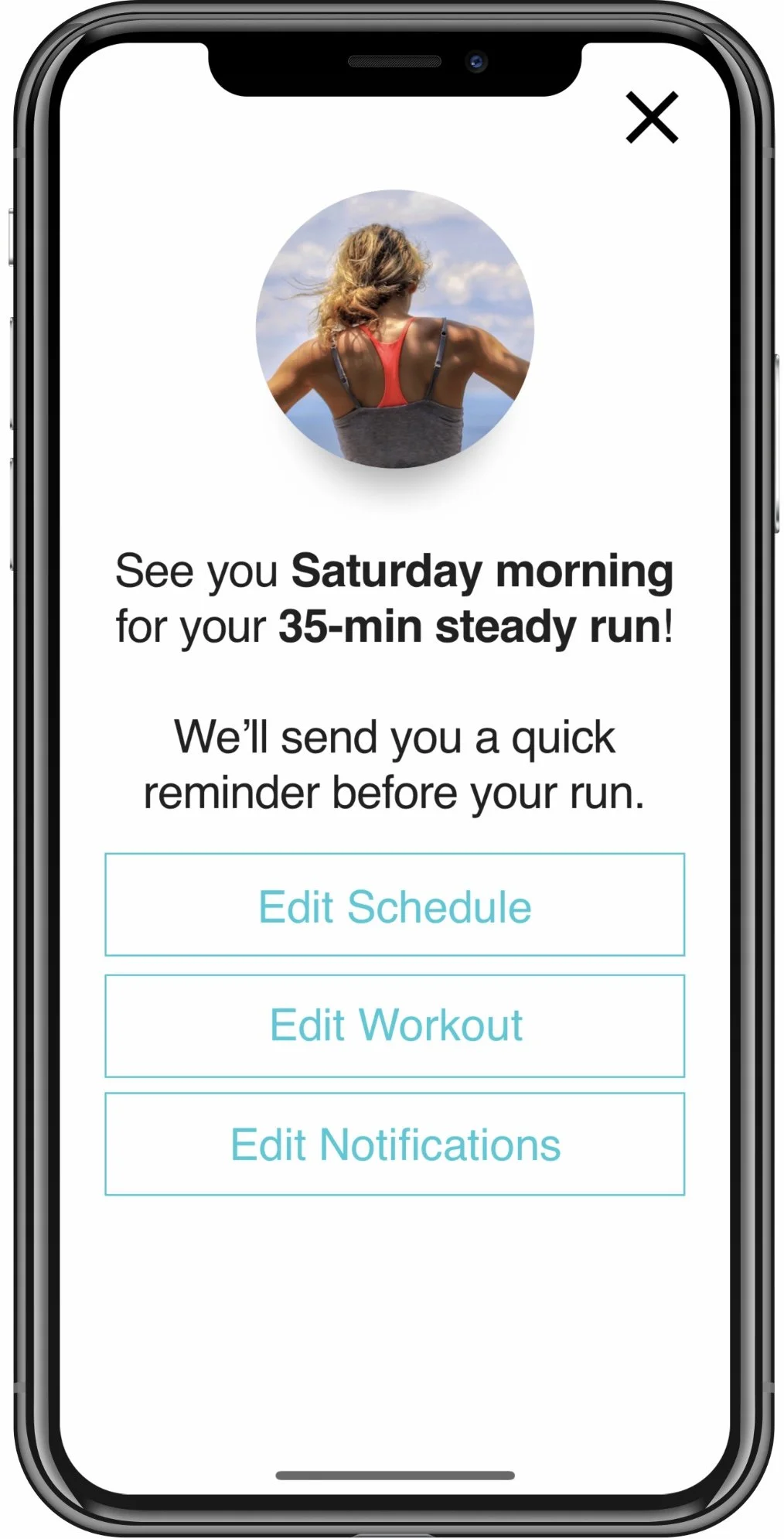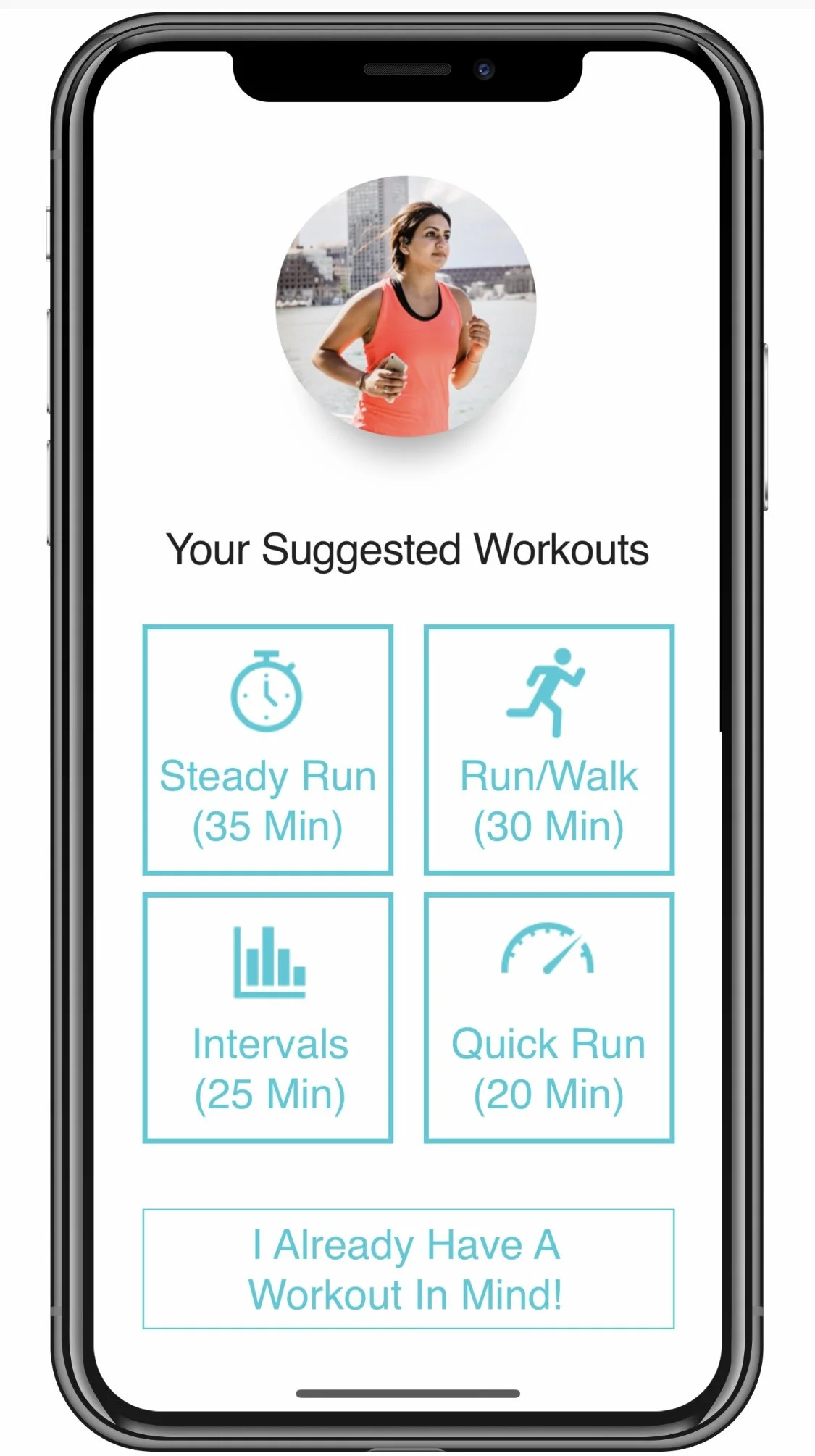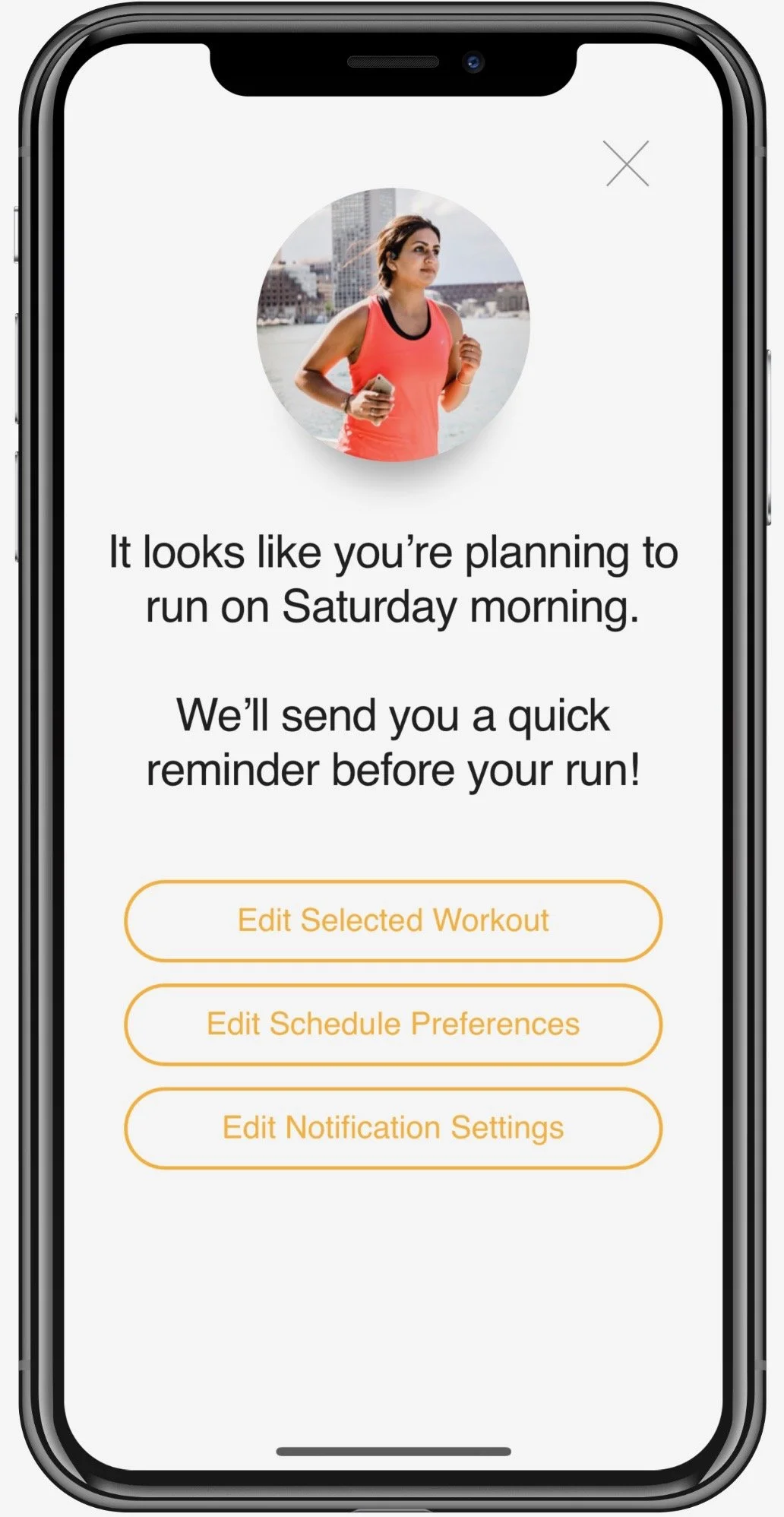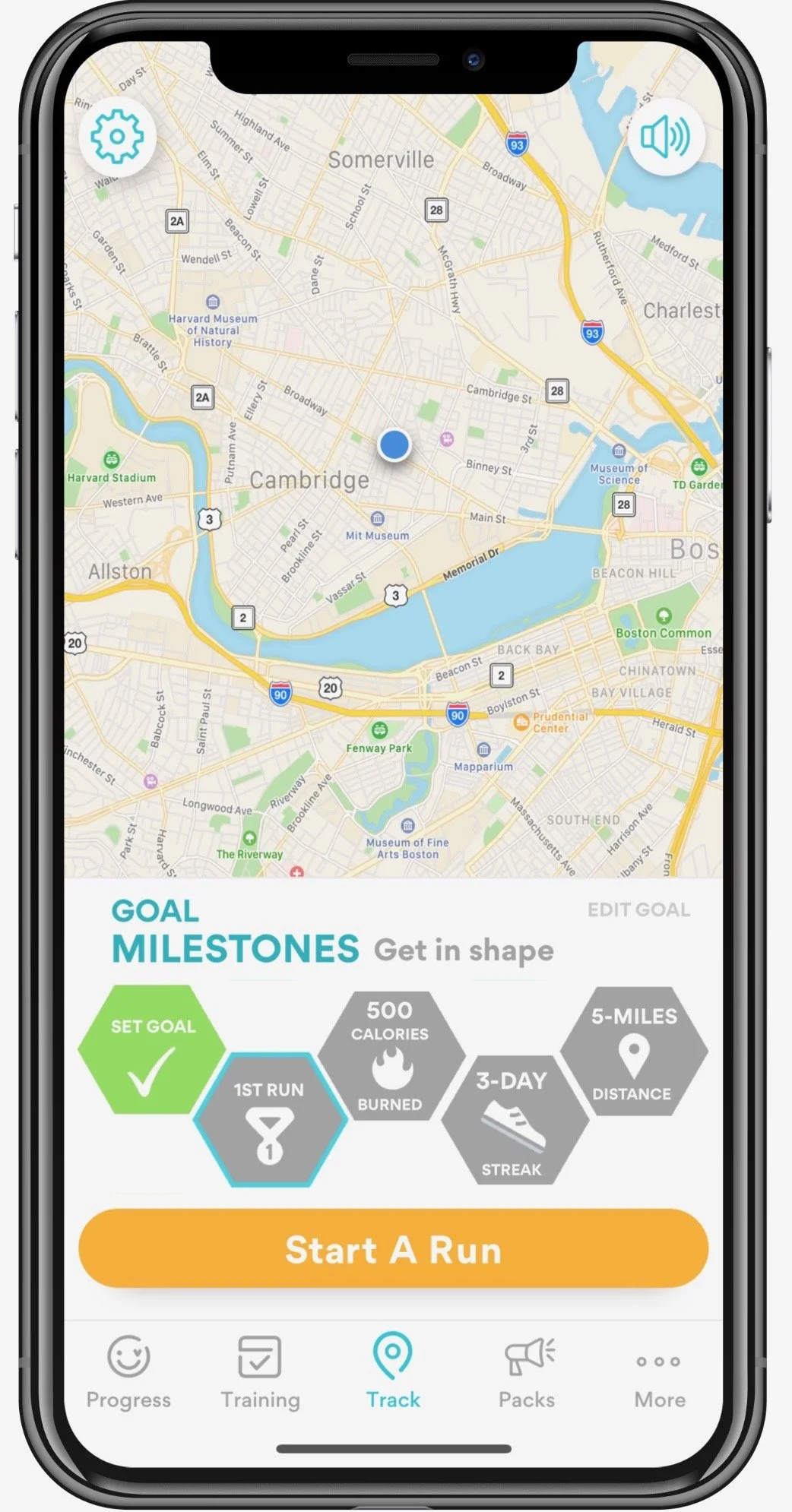ASICS Runkeeper App: client project
Improve the onboarding process of the Runkeeper App to increase first-week retention and time from download to completing your first run.
Objective: Understanding and improving the onboarding process to increase first-week retention on the ASICS Runkeeper App.
Methodology: User Research through contextual interviews, large-scale survey, usability testing of designs & prototypes
Timing: 3 weeks in Fall 2018
Our challenge with ASICS Runkeeper was to boost first-week retention by encouraging new users to complete their first run within seven days of downloading the app. As a team of four, we conducted user research on both new and experienced runners to uncover their goals and motivations, while also analyzing competitor apps and secondary research.
From our interviews, we gained insights that guided us in redesigning the onboarding process. We moved from a simple two-question framework to six dynamic pathways tailored to each user's running goals. These questions help identify user profiles and determine effective reminders to support their objectives. We also used ASICS Digital's user personas to explore frustrations and aspirations, ensuring our solutions met real user needs.
Runkeeper App Onboarding Flow
Core insights
21 Individuals were interviewed using the scripts for a New or an Existing Runner. During the interviews, we were able to see the running apps they currently use as well.
Runners compare themselves no matter what
They compare to past selves, other runners, as well as to their future self
What defines a runner?
When interviewing we asked our runners to talk about their running career. To call oneself a runner can mean a variety of things: how often are you running, what distances are you running
From one user, during their training for a marathon they said, “I’m not a serious runner,” when their partner said ‘you are training for a marathon, you are a runner.”
Users run for mental clarity
Many runners discussed that running brings a sense of calm to them. It allows them to feel centered and reduce the stress from their lives.
There is a celebration of running
Several users focused on celebrating their run, it’s not a punishment for indulging but a way to feel alive.
The running community is highly valuable for runners of accountability and social aspects
Through affinity mapping, we saw the importance of community and accountability rise to the top from all our users. This community provides support when they need it as well as the fun community feeling.
Personas
From our findings, we discovered we had a third Persona to solve for: the Rusty Runner! ASICS Digital provided their user personas that we were inspired by during our research phase so we dove in to understand all three on a deeper level to express their frustrations and goals.
Our Personas are:
Existing Runner Elsa
Elsa has been a runner for years and loves to workout. She isn't always sure if she's improving or progressing with her goals
Her goal is to challenge herself and avoid injury to prevent any setbacks
Rusty Runner Rachel
Rachel is getting started again with running, she feels guilty over her current ability
Her goals are to run more consistently, be content with her progress, and incorporate running into her busy schedule
New Runner Nate
Nate just signed up for a 5k with friends and is excited. He already works out but doesn't consider himself a runner
He is anxious to get started running and unsure how to get ready for the 5k
Intro Question Iterations
This was the original screen that provided 5 answer options to users for why they are about to begin using Runkeeper. During whiteboarding, we chose to adjust the answer options to fit the goals we were hearing from users:
Image 1: Current Question with: Lose Weight, Get in Shape, Run more often, Run a race, and Something Else
Image 2: Updated with adjusted answer options: Challenge Myself, Get in Shape, Run More Often, Run a Race, Run to De-stress, and Something Else
Image 3: Final Iteration with 4 answer options: Challenge Myself, Run a Race, Run to Destress, Something Else
During the testing, we found that users were overwhelmed by the choices and wanted to option to select more than 1 goal for using the app.
After several rounds, we merged ‘Run More Often’ and ‘Get in Shape’ to be under the umbrella of 'Challenge Myself'. Also to note, the term 'Run to Destress' did elect some funny responses as users thought it said 'distress' so we have another potential iteration to adjust the language to say 'Run to Reduce Stress.’
Suggested Workout & Run Reminder Iterations
From the kickoff, we knew we wanted to remind users to complete their first run within one week of downloading the app. To accomplish this, we included two questions in the onboarding flow to determine which days the user prefers to run, allowing us to set timely reminders.
We also recognized that not all users would be ready to go for a run immediately upon downloading the app. Therefore, we added a few final screens in the onboarding process for users to choose whether they want to run NOW or LATER. Based on their selection, they would be directed to a suggested workout page or given additional options.
Image 1: Initial Iteration of the Suggested Workouts Page
Image 2:Based on feedback, we pulled out the Run Now or Later question to a separate screen in the flow
Image 3 & 4: Iterations of the reminder screens - where from the answers the user provided to us in the flow - we would customize the time and day of the reminder to help them accomplish their first run.
During the testing - we elected to change the colors to be Runkeeper Blue to further differentiate that these screens are not part of the question but a new section of the app.
Starting Page Iterations
In our first round of testing, we retained the existing start screen to better understand user opinions. During the research phase, we aimed to visualize the goals of the runners more effectively. We believed that incorporating this visualization on the start page could help streamline the design by removing excess items and creating a cleaner and more effective interface.
Image 1: Existing Starting Page for the ‘first run’
Images 2-3: This showcases our initial adjustments to the start page, displaying the goal visualization and tracking progress from pre-run to post-run accomplishments. The feedback was overwhelmingly positive—users appreciated the new features but suggested further improvements.
Images 4-5: We refined the design by reducing the visual footprint of the graphics so they wouldn’t dominate the page. Instead of writing out the next goals, we added a border for better clarity. While the feedback was encouraging, we recognized that there was still room for further enhancements!
Unicorn Question Creation
After whiteboarding for several hours, our group realized we wanted a singular question that would enable us to identify the New, Existing, or Rusty Runner. This question was coined as our unicorn question.
‘Do you have a running routine?’
Routine was a term heard from all our users so we knew it would be easily understood by any new user to the app and would be universally understood. We also had each answer option directly correlate to which persona the user was.
